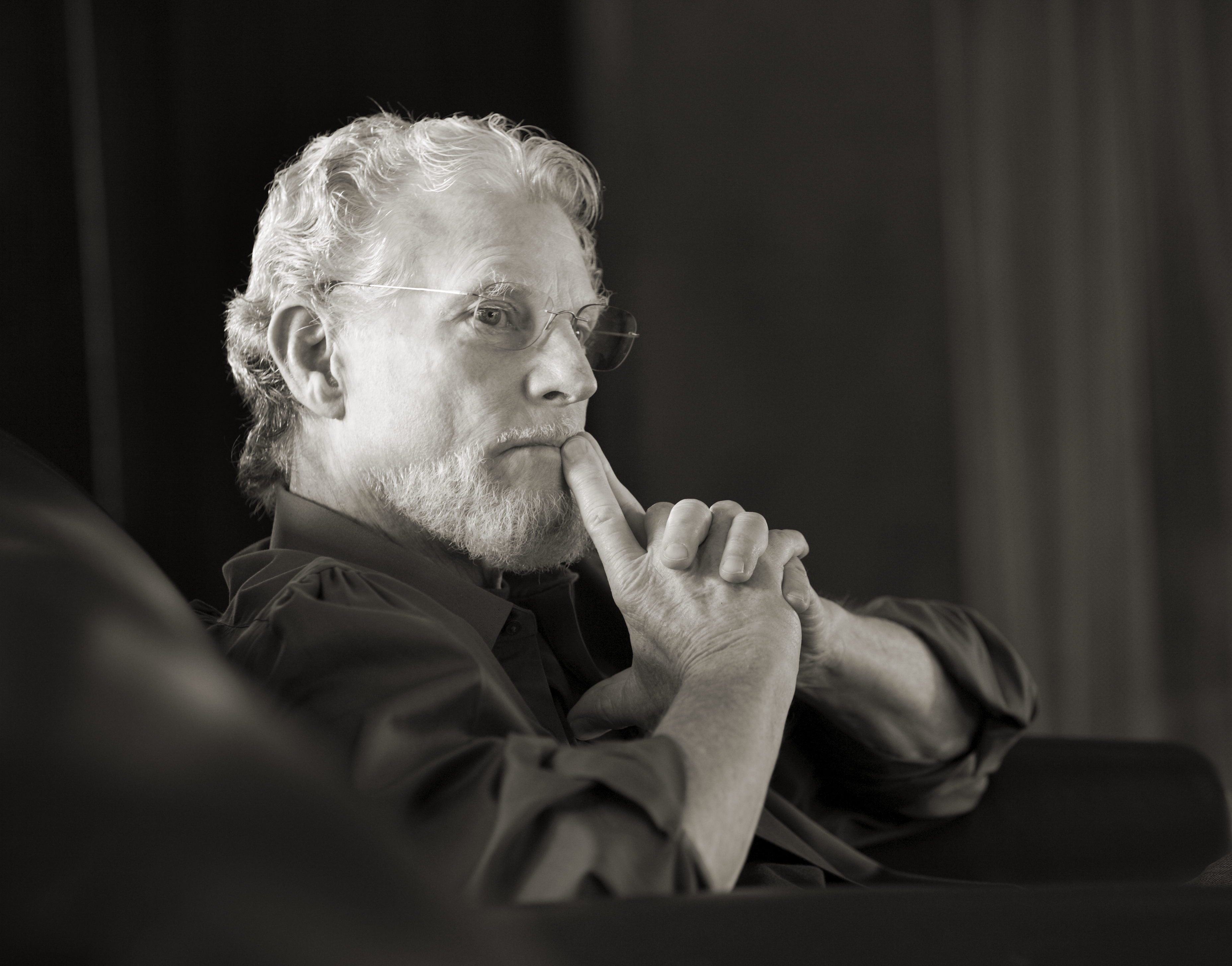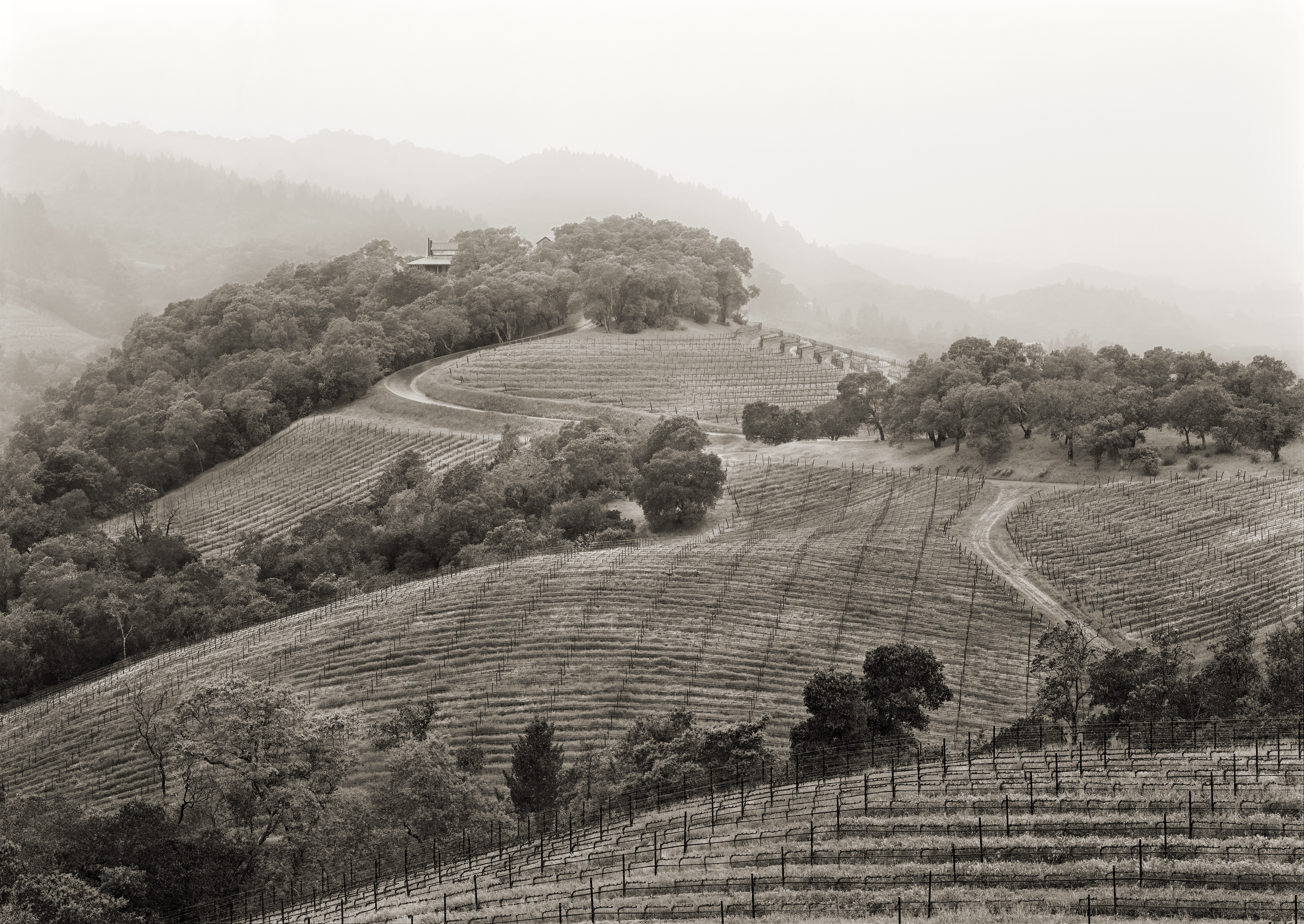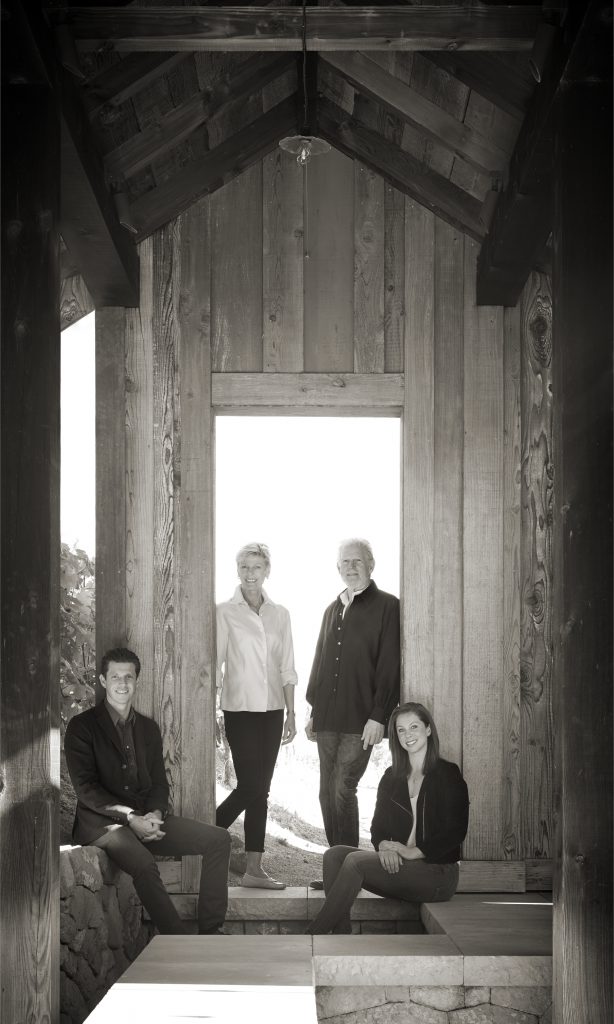
H. William Harlan is the owner of several properties in Napa Valley, including Harlan Estate, Promontory, Meadowood, and Bond. Liv-ex Director, Anthony Maxwell, recently caught up with Bill Harlan to find out a bit more about his vision and how he founded Harlan Estate.
Photography by Olaf Beckman.
How did you first become interested in Napa?
It first started when I moved from Southern to Northern California to study. My first visit to Napa Valley was in 1958. I was a freshman and I’d heard that there was a place where you could taste wine for free and they didn’t check your ID. I then came back in 1959 and did a ‘documentary’ on the Napa Valley to get in behind the scenes to see how it worked.
I said at that time that if I could ever afford it, I’d like to buy a little piece of land and plant a vineyard, find a wife, raise a family, make wine… but I had a handful of other ideas as well. I wanted to sail a boat around the globe, learn to fly, experience the world…
I visited the Napa Valley throughout the 1960s, tasting wine and watching things evolve. I went to the opening of the Robert Mondavi Winery in 1966. That was an inspiration.
Did you always want to build in Napa?
Yes, for winegrowing. I had no interest in anywhere else. Robert Mondavi was a leader in putting the Napa Valley on the map and it was the closest and most familiar to me. Why go further if Napa Valley’s already perceived to be among the best winegrowing regions in America?
It wasn’t until 1979 that I got a call from Robert Mondavi. I had just bought my first piece of property in Napa Valley. It was 256 acres, a small private club that had gone to seed. I thought I could build a vineyard where the golf course was and a house where the clubhouse was located.
The two of us went to lunch and he asked me why I acquired that land. I told him about my dream of planting a vineyard, but he said that the Napa Valley had much greater potential than my romantic idea and that the property I’d bought was not very good vineyard land. He added that it would be much better as a common ground for the Napa Valley winegrowing community – and for the wine auction he had in mind. He wanted to give me some perspective and organised a trip for me to visit some of the great chateaux of Bordeaux and the grands crus of Burgundy. At the end of the trip he wanted me to attend the Hospice de Beaune as a model for this wine auction in the Napa Valley.
So, I went on that trip and visited these great properties, including the Hospice de Beaune. On returning, I agreed with Robert Mondavi’s idea for Meadowood to become a common ground and to make it the location for a charity auction. That’s how the property became the home of Auction Napa Valley, beginning in 1981. Meadowood went on to be recognised as one of the finest resorts in America with a three-star Michelin restaurant—only the second one in California. The Napa Valley Vintners Association just held the 38th annual auction there this year and Meadowood has truly become that common ground that Robert Mondavi envisioned.
What did you learn in France?
Up until then, the idea of living in the moment was very important—as was the idea of getting the highest return on your time and investment. But when I came back, I was focused on building something that would hopefully last not only for many generations but centuries. So, the trip changed my perspective on time. That is what made the biggest difference in my approach. Instead of my primary focus of getting the highest return on investment, my goal became much more about what I think of as the greatest return on life.
I realised that I wanted to create something like a ‘First Growth of California.’
What was the definition of a Californian First Growth in your mind?
First it was to build a winegrowing estate that can produce a wine that belongs in the company of the finest wines in the world. For that, you must start with the best land. The second requirement is optimal size to establish a global presence and to remain relatively small and sustainable over generations. The ideal production, I believe, is between 8,000 and 10,000 cases per year.
The wine must purely express its place of origin: It must express the character of the land, year in and year out, but each vintage must also capture the ‘mood’ of the land during that growing season.
What is the best land?
After visiting vineyards in Bordeaux and Burgundy, but also vineyards in Germany and Spain and Italy, I learned that the most valuable land had great drainage and was mostly in the hills or on high ground.
Historically, the best red wine produced in America was right out here in the Oakville bench lands. The wines from this specific area have displayed great quality and consistency over a long period of time.
I wanted to be as close as I could be to the bench lands, but I also wanted to be in the hills, because it was there that I hoped we might attain a singular character. At that time, the hills were mostly forest and woodlands. I eventually acquired 40 acres there, but it was a high-risk strategy because the land had never been planted on before and was unproven and unknown.

Looking North across Harlan Estate vineyard to the winery (hidden in the trees)
Back then when you were looking to buy the land, did you know if you would be allowed to plant?
I felt we would be allowed to plant. In those days, it was much easier than it is today; it’s almost impossible now. I was fortunate to be here at that time in the Napa Valley.
So, it was more about getting access to the land and developing it?
Yes. I started with those 40 acres, but in order to have a global presence, we needed more. Back then, the First Growths were all much larger. The smallest, Château Haut Brion, produced around 10,000 to 12,000 cases at the time. This land would only produce about 2,000 cases.
I soon realised that you can’t acquire that much contiguous hillside land of that quality in Napa Valley, so my perspective on securing a single estate changed. To attain my ideal production, I would need close to 160 acres. That meant working with two or three smaller properties in addition to the first one I acquired.
How high risk was it? Did you do a lot of checks about the soil for example?
I did some soil samples, but I couldn’t be certain that I’d found a site with the level of potential that I was seeking. It took about ten years before we were convinced that the land could fulfil our hopes.
If you don’t mind me saying, it seems completely mad. Beautifully mad, but completely crazy.
If I knew then what I know now, I probably wouldn’t have taken that risk. But I was curious, and I wanted to break away from what had been done before.
What were the unforeseen challenges?
To obtain 40 acres of hillside vineyards, I needed 240 acres total of wild land. I was able to attain that goal, but I wasn’t able to secure a single contiguous parcel. That took another decade.
But you fought for it and worked damn hard?
It was a lot of work and a lot of risk, but it was worth it. There were times when we didn’t know if we were going to make it. It cost a lot more money than I thought and took a lot more time than I thought. To give you some idea, after I acquired those first 40 acres, it took another twelve years before we sold our first bottle of wine. That was twelve years without a nickel of revenue – only money going out. It was another eight years before we broke even.
How did you acquire your other property, Promontory?
Thirty-four years ago, when I was hiking over these hills, I came across a fantastic piece of land. It was also wild, but I couldn’t buy it because it was too large, I couldn’t afford it, and it wasn’t for sale. Also, I didn’t know how good it could be, because I hadn’t proven Harlan Estate yet. Moreover, I didn’t have a team that could handle it. But I kept my eye on it for many years.
Then ten years ago, I got a call from my attorney who said it might be for sale. I told him I was definitely interested and we got it under contract. We did about fifty soil samples and we felt that it had great potential. We weren’t sure what the character would be because it was very different from the Harlan Estate land, even though it was less than a thousand yards distant. Still, I entered into the agreement to purchase the 480 acres. It took another few years to better understand its potential. With this confidence, we were able to acquire the balance of this canyon and its hillsides.
So what size is it now?
It’s approximately 840 acres, of which 80 acres are planted to vineyards. It’s still over 90% wild land.
If my maths is right, does that mean it’s double the vineyard size of Harlan?
Yes, approximately so. We also have Bond, a small portfolio of grand cru-quality vineyards that total about 50 acres. I felt that it was important for us to have all three because, between them, we would be able to produce around 8,000 cases over the long run. Harlan Estate produces between 1,800 and 2,000 cases, Bond – between 2,500 and 2,700. Promontory – in the next decade, as the vineyards are fully productive and mature – will slowly move from its present 2,000 cases to approximately 4,000. The total for all three is about the average production for the smallest of the Bordeaux First Growths and the best-known grand cru domaine in Burgundy. This has taken us 40 years, but this enables us to reach our original production goal.
Am I right in thinking a certain element of Promontory is going to be distributed via the La Place in Bordeaux?
That’s correct. That decision was made by the second generation, my son, Will, and Cory Empting, the Director of Winegrowing. They released Promontory via La Place in Spring 2018.

Behind: Bill and Deborah Harlan. In front: Their children, Will and Amanda.
Does that mean you’re supportive of the idea?
We’ve been going to Vinexpo since the Eighties and we’ve gotten to know many of the négociants. They were always interested in Harlan Estate, but they weren’t doing anything in America at the time. It had taken us 25 years to build our international distribution network and we were a little uncomfortable with the idea of turning it over to someone else. Why change what was working?
We told them that we weren’t willing to work with them on Harlan Estate. Not because of them—we felt that they had a huge potential—but because we wanted to be loyal to those whom we had worked with in the past. Promontory, however, hadn’t been sold to the trade yet, so we said that before we did, we’d consider La Place. The négociants were interested, but they wanted to see the property and taste the wines for themselves first.
When they came, they couldn’t believe we had found something that existed in the heart of the Napa Valley that no one had seen. They saw fantastic potential and they said they would like to work with us.
The younger generation said, why not? If it didn’t work, we could sell all the wine to our subscribers ourselves through the system we’d built with Harlan Estate and Bond. So, yes, we are supportive of the second generation’s commitment to La Place. The three négociants that we entered into agreement with have been performing as they said they would and we’re very happy with the relationship and strategy.
Also, the Harlan Estate and Bond second-generation teams are very happy with the international distribution network that the first generation has built over the last 25 years. There will be no change with the distribution for Harlan Estate and Bond.
To read part two of our interview with Bill Harlan, click here.
[mc4wp_form id=”18204″]



